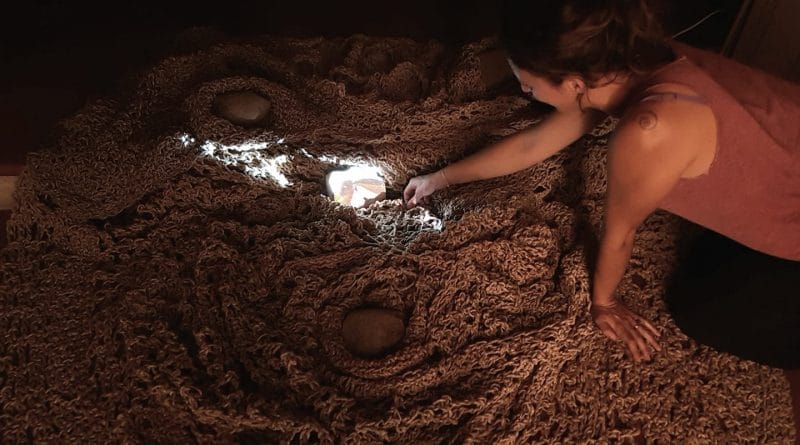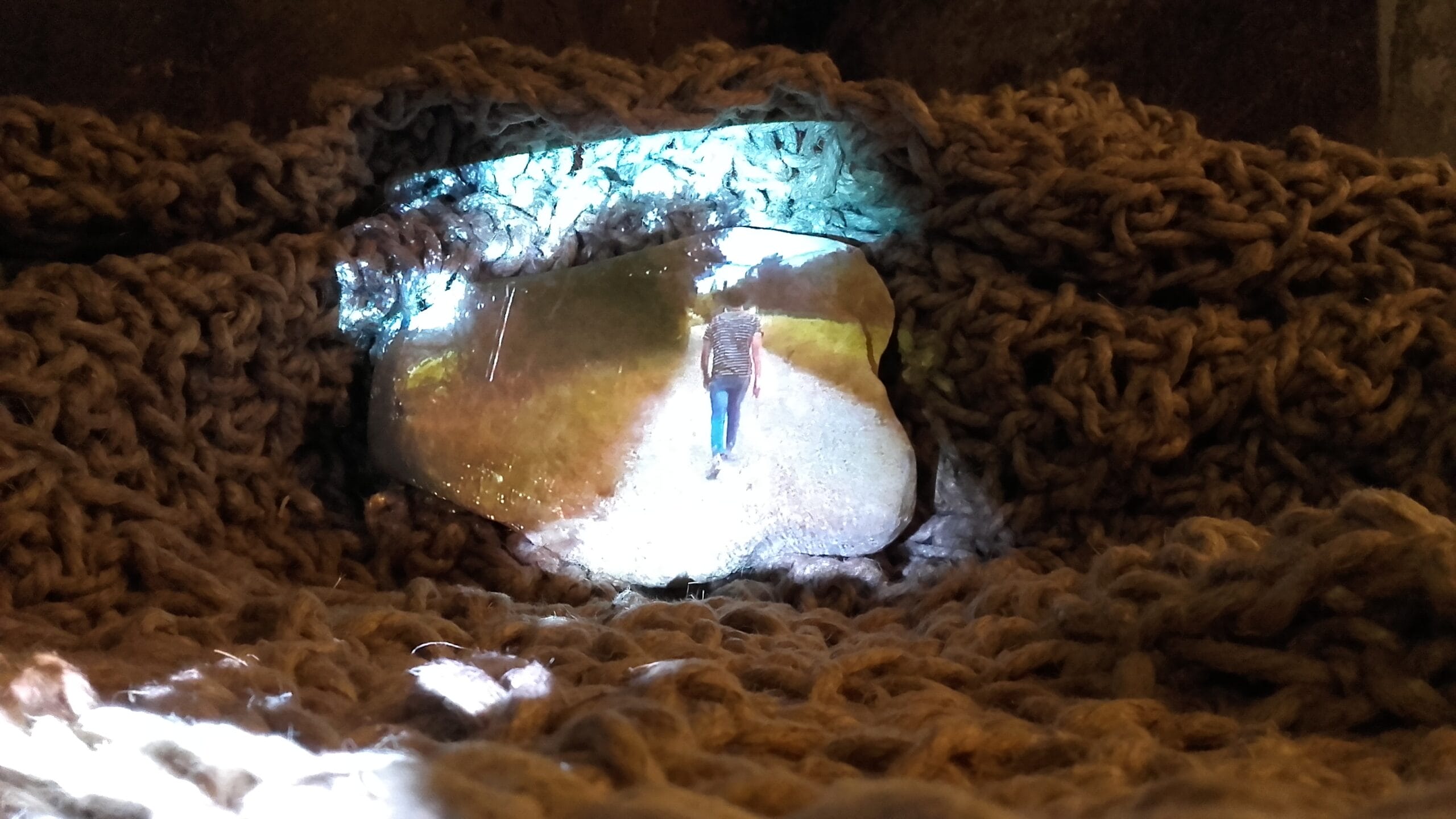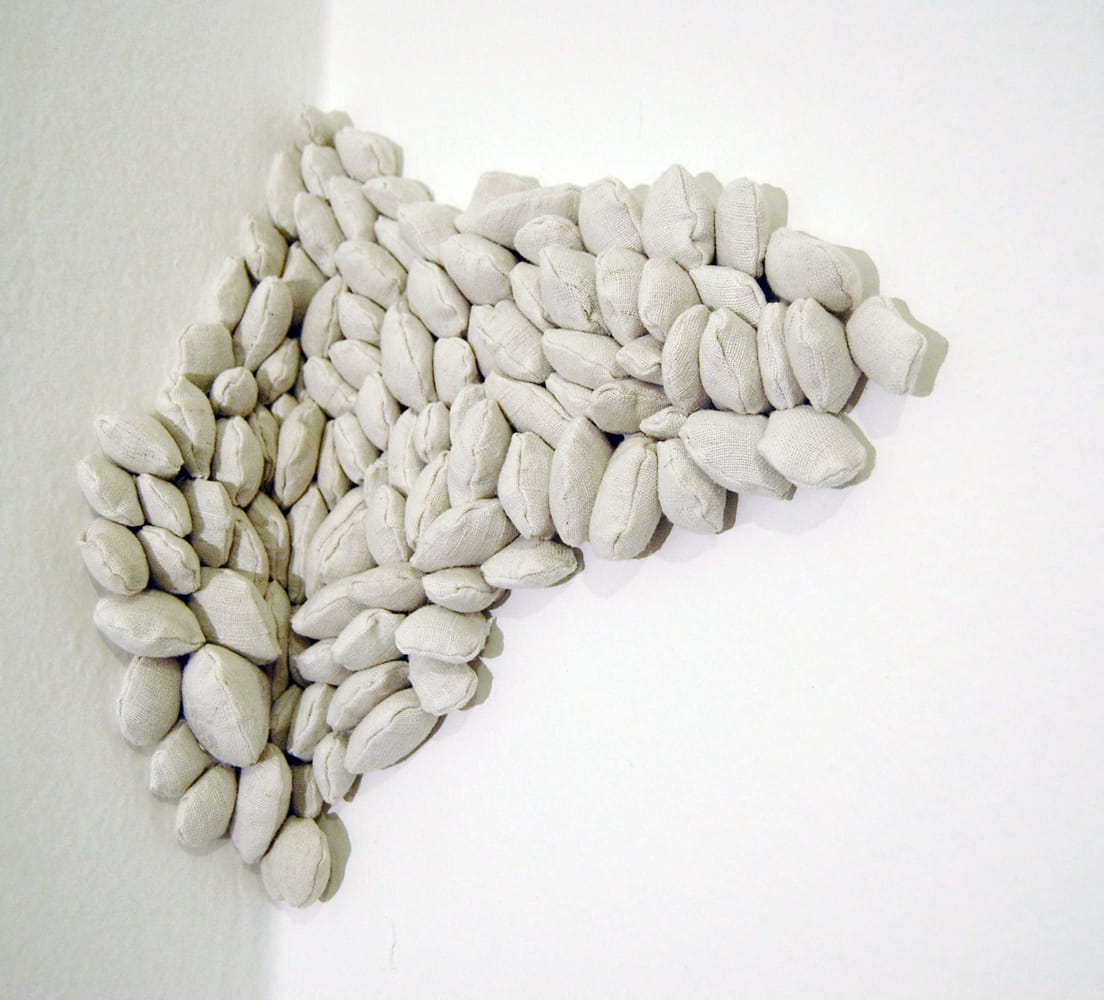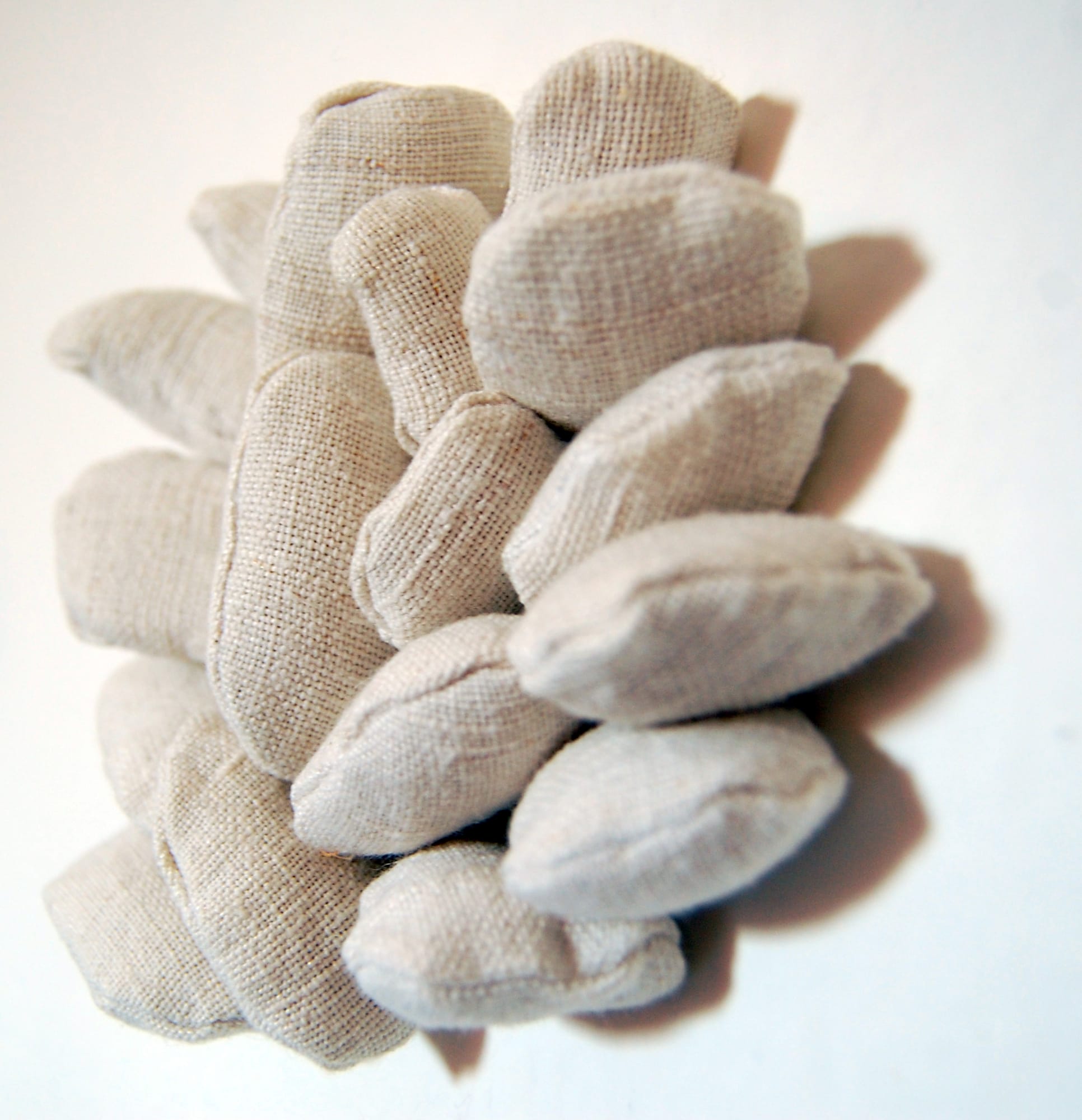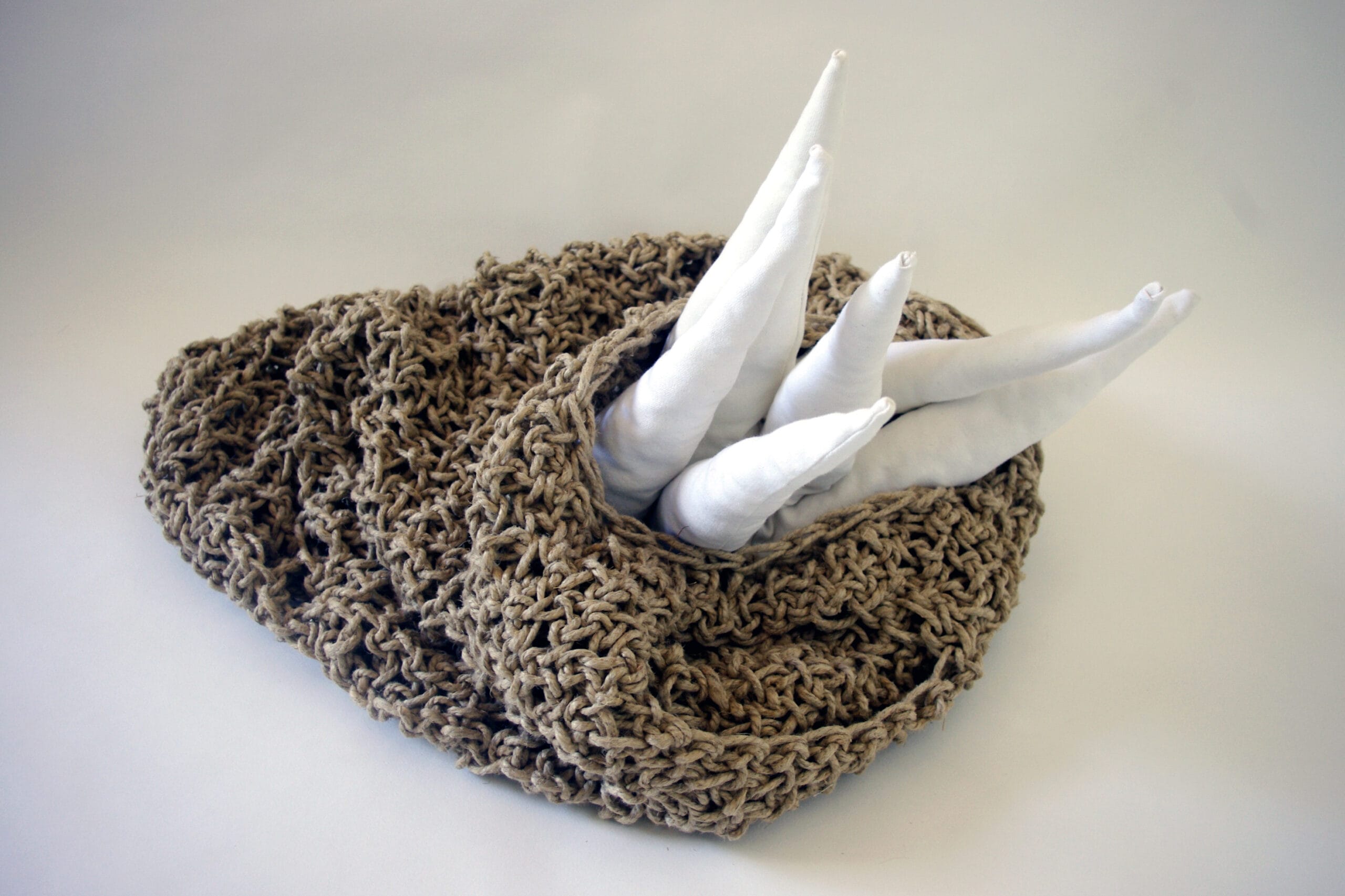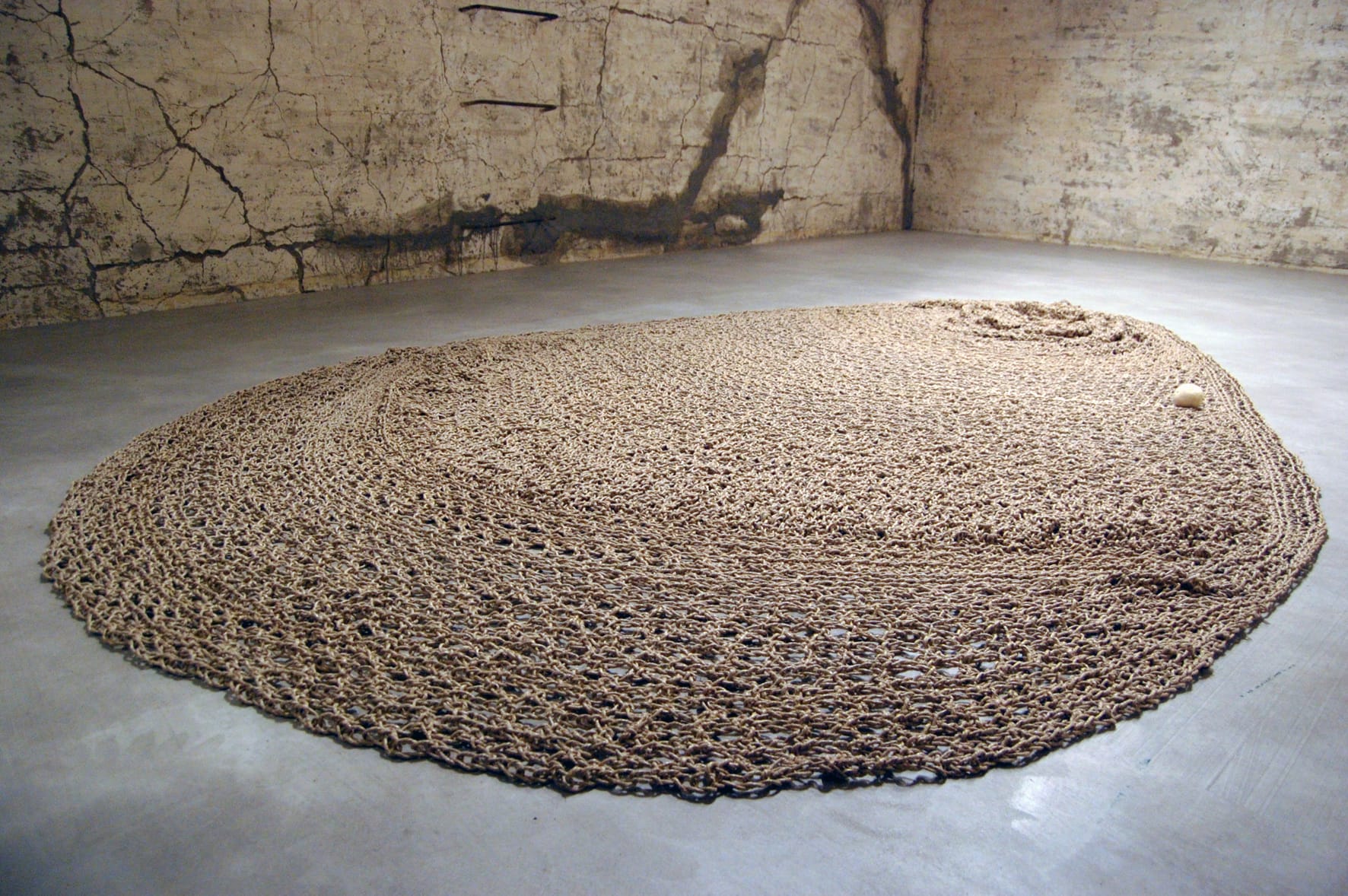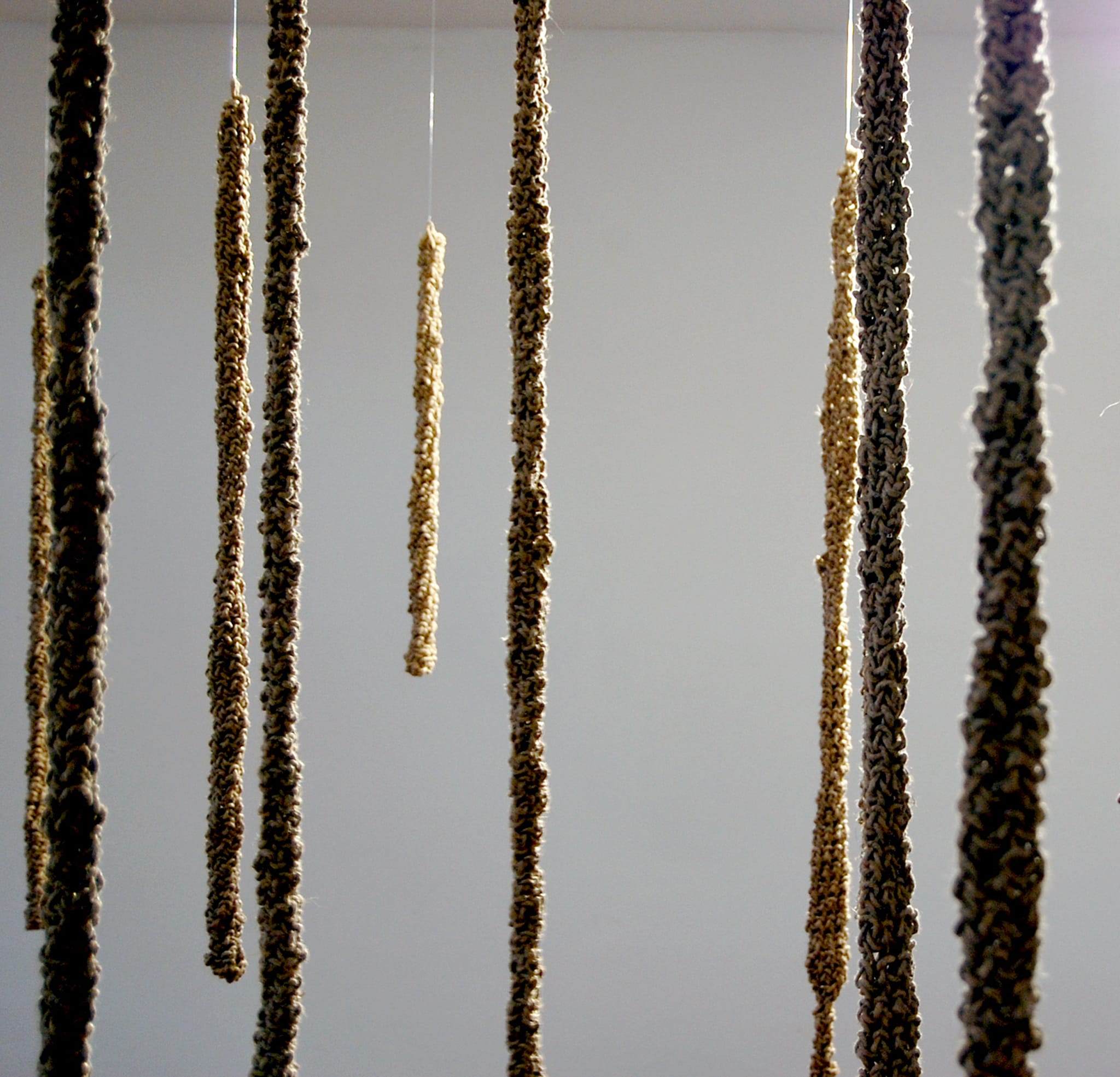Interview to Laura Guerinoni
Translation by Marina Dlacic
Laura Guerinoni, born in Bergamo in 1985, stands out among contemporary artists for the use of the textile medium as a means of communication and expression of “feeling”.
After graduating from the Art School of Bergamo, the artist moved to Bologna where, in 2008, she obtained a first level degree in painting and a second level degree in visual arts at the Academy of Fine Arts in Bologna (2010 ). From 2008 to 2011 she attended the three-year training course Il Mestiere delle arti, sponsored by the Emilia Romagna region and in 2013 the basic weaving course conducted by Nicoletta Di Gaetano at the Museum of Tapestry in Bologna. Finally, in 2021 she attended the Advanced Training Course in Aesthetic Education, Inclusion and Digital Innovation for the fruition of museums at the University of Bologna.
From the training experience to the work experience, the initiatives that see her personally involved are numerous; in 2008, for example, she was one of the founders of the Mentelocale artistic group which still operates in the field of public art. Subsequently, in 2017 she founded Trame Tinte d’Arte, a shared textile art workshop in collaboration with the Gruppo della Stadura association and the Bentivoglio Museum of Rural Life, where her atelier still resides. Furthermore, since 2020 she has been working as a teaching assistant for the decoration school at the Academy of Fine Arts in Bologna.
Her ideas, embodied in textile masterpieces, are exhibited in solo and group exhibitions. Starting from the most recent activity in 2018 at Rizomatica, 1st Biennial Review of Fiber Art in Spoleto (Perugia) at Palazzo Collicola Arti Visive. Her personal Trama dates back to 2015 in the MOO gallery in Prato and in the same year she exhibited in Off loom II. Art out of the frame, at the National Museum of Popular Arts and Traditions in Rome. In 2014 she is on display at the Valcellina Prize in Maniago (Pordenone) and in 2013 in Self-portraits I. Nuove Gen (d) erazioni, an exhibition organized in collaboration with MamBo, Museum of Contemporary Art of Bologna.
Laura Guerinoni also stands out internationally, specifically she participates in Contextile 2012 in Guimaraes in Portugal. The exhibition dedicated exclusively to the artist, entitled: Reminder at the Civic Museums of Reggio Emilia, dates back to 2011 and in the same year an exhibition in Feltrosa 2011 at the Fabbrica di Gambettola (Forli’) space. In 2010 she exhibited in Here we are at the PAC in Ferrara and in 2009 at Open XII on the island of San Servolo in Venice. She currently lives and works in the lowland near Bologna
5′ walk alone – 5 stones walk alone, Laura Guerinoni and Monica Comaggi, 2018. Video projection, hemp rope, waste stones variable size. © Copyright 2021 by Laura Guerinoni.
How are your works conceived? What are the sources of inspiration? What are the artists or movements that have most influenced you? Which do you feel most similar to your research?
The artist who most of all influenced my art was undoubtedly Louise Bourgeois, not so much in terms of the stylistic aspect of the works, but rather for the concepts she expressed. Her research on time, on memory, her obsessions related to family, to loneliness have always involved me emotionally. I have read, studied and reread many times her text “Destruction of the father / Reconstruction of the father. Writings and interviews “.
“I love a lot of artists” to name them all, my inspiration finds space from ancient art to contemporary performances, from cinema to painting, passing from the photographs of Tina Modotti to the choreography of Pina Bausch. A work, whatever type of work it is, to inspire me must give me back a “Feel”.
For you, creativity is a mix of nature, time, memory and mutations. How has textile art become an expression of your language?
The textile medium in my work was introduced almost by chance; one day, during the first years of academy while I was crocheting, I began to imagine and think that a technique as repetitive and reflective as that of crochet could be the best expression to represent the concepts my thoughts poured into. So I carved an old drummer’s stick to make it into a great crochet hook with which I created my hemp yarn works.
I have always painted, both in the artistic high school and in the Academy of Fine Arts, but I knew that two-dimensional painting had always been too complex and mental to be able to express a concept like that of “Feeling” at 360 ° to which my world referred.
I needed concreteness and materiality.
Shelter, 2015. Technique: crochet, materials: hemp rope, padded fabric, 40x95x20 cm. © Copyright 2021 by Laura Guerinoni
“This work takes inspiration from marine creatures, in particular the hermit crab, a crustacean with a soft abdomen, which inserts its body into empty and abandoned shells of gastropod molluscs to protect itself.
The work is divided into two parts.
The shell / shelter is made with patiently woven hemp rope crochet. It represents a safe haven, woven of organic material. The white padded fabric represents the soul of the work that moves in search of a body in which to live”
What is the genesis of your works, how does the idea arise and how does it take shape, how do you choose techniques and materials? What is the meaning of the reference to the natural world?
The reference to the natural world arises above all from the feeling of being part of it. An archaic appeal that involves all the senses. Hemp rope is still today the most suitable material for the realization of my works. Organic, rough fiber that scratches, smells of the countryside, of something ancient. From this also the recall to memory, an unconscious memory that concretizes the real, simple and concrete part of the human being, stripped of any conventional “dress”.
Lacrima, 2010. Corda di canapa grezza, lana cardata. Tecnica uncinetto e feltro a mano, 300×500 cm. © Copyright 2021 by Laura Guerinoni.
How do your works relate to the space in which they are set up, and to the public / user of the work?
My works try in some way to support the exhibition space. They are works that change, both on a material level (being soft and foldable) and conceptual. The work clings to space like a stain.
I believe that in front of the artistic artefact the public / user must feel involved with the senses, experience sensations of any kind.
Some works, on the other hand, are born specifically for certain spaces, these mainly concern the works that I create in the field of public art together with the artistic group to which I belong: Mentelocale. In these works, space is the input from which reflections, documentation and relationships with the people who live there and live it daily, with history, start.
Sospeso (Suspended), 2012. Hemp rope, nylon thread. Crochet technique, 32 elements, variable size. © Copyright 2021 by Laura Guerinoni.
How has this anomalous last year affected your work and research? Do you think that the changes triggered by the pandemic will lead to a different way of operating in the artistic and cultural sector?
This last year has certainly marked the entire cultural context, including my work.
In April 2020 I was called as an artist to participate in a very interesting social project of the Palazzo Strozzi Foundation during the Thomas Saraceno exhibition.The project, dedicated to people with Alzheimer’s, their families and the operators who take care of them, would have allowed me to intervene during some artistic meetings related to the current exhibition. Not being able to collaborate in person, I was able to participate remotely, together with the operators and users of the initiative, by searching for images from the newspaper.This little experience made me think a lot about the sense of distance, of what is inside and what is outside, on the daily rhythms. So I spent these months studying, training, understanding what direction my life and my artistic projects were taking.
The pandemic has certainly strengthened the sense of the “culture of the neighboring territory”: privileging and making important what we have under our eyes every day and that for a long time, perhaps, we have not been able to appreciate. These are the concepts I’m thinking about.
What project are you working on right now? Is there an initiative you would like to be able to shape in the short or long term?
As I mentioned earlier, the stalled exhibition period caused by the pandemic has increased in me the desire to get back to projects, shapes and materials, especially in light of recent reflections and studies.
My work in the Academy as a teaching assistant, the role of coordinator of the Resonances exhibition at the Museum of Rural Life in Bentivoglio, the commitment to the Museum itself – a place of the heart, where my laboratory and didactic ideas are able to take shape – are all stimuli that increase my thirst for knowledge with respect to the basic concepts of my work, such as that of historical and personal memory.
In September at the Museo della Civiltà Contadina in Bentivoglio, with my artistic group Mentelocale we will exhibit some installations created during the lockdown period, in which we asked for the active participation of people linked to the Bolognese countryside. They will be sound and video installations, and will also see a more performative moment where some of the museum’s textiles will be used.
Sitografia
https://www.lauraguerinoni.com
